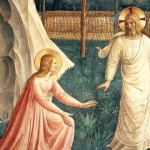 Most books about the spiritual journey focus on the first steps — on awakening to an awareness that there’s more going on than your own limited perspective and tuning in to the divine in and around you. Sacred Fire
Most books about the spiritual journey focus on the first steps — on awakening to an awareness that there’s more going on than your own limited perspective and tuning in to the divine in and around you. Sacred Fire assumes the reader has already made headway in these areas and looks instead at what Ronald Rolheiser considers the middle phase of spiritual maturity, which often takes up the bulk of life after that awakening and before retirement.
Anyone in this stage which he calls spiritual adulthood will find rich rewards in reading Sacred Fire. I hesitate to write those words because even placing oneself in that category feels tinged with a kind of pride Rolheiser identifies as one of the issues for the spiritual adult. The challenges in this stage of life are often more subtle and more wrapped in seemingly good intentions — like being proud of one’s spiritual maturity — like exhibiting gluttony not through overeating but through workaholism.
Spiritual challenges take different forms at different stages in your journey, and the main theme of Sacred Fire is that one-size spiritual advice does not fit all. Rolheiser looks at what the teachings and example of Jesus have to say to the spiritual “adult” who, from a place of relative stability, is now asking a different set of questions than the adolescent or new convert, most significantly, How can I be of service to others? Understanding the lessons in scripture always through the beginner’s perspective deprives us of layers of meaning contained in the stories. In the process, Rolheiser borrows heavily from the teachings of St. John of the Cross and others on the spiritual stages of growth, and from modern psychology. There is rich insight into the human condition and into the true temptations we face in this life.
My only criticism of Sacred Fire, however, is due to this approach. Rolheiser embraces and expands on the medieval Christian obsession with hierarchies and ladders of spiritual development; and there’s certainly truth in such hierarchies. But imposing frameworks on something as fluid as an individual’s spiritual growth, while giving us a way to analyze and understand things, can also gloss over and obscure issues that don’t fit the framework. Over and over throughout the book, Rolheiser mentions exceptions to the clear-cut framework that he initially presents. After defining a sharp line between adolescence and adulthood, he acknowledges that the challenges of adolescent spirituality continue into adulthood and that some people have more problems with one or another of them.
And missing entirely is the idea that some spiritual development is cyclical. For example, in my own life, my career and calling have not developed in a neat linear fashion from adolescence into a relatively stable adulthood headed for retirement. Rather, I’ve had three or four careers (if not a dozen); I’ve felt called to be of service in different ways at different times. Today, I understand myself far better than I ever have in some ways, and at the same time I’m going through yet another discernment process about calling and what I have to offer. This can happen with careers, relationships, faith communities. In every part of life which Rolheiser identifies as a place of adult stability, for many it is more cyclical than linear. These cyclical patterns, like the seasons, are as natural if not more so than linear growth caused by the accumulation of experiences.
Again and again, Rolheiser comes back to the parable of the prodigal son, equating adolescence with the impetuous son — defying authority, seeking his own identity and making a mess of things — and spiritual adulthood with the older brother —exhibiting resentment and jealousy and thinking his obedient actions prove his worthiness. Rolheiser says flatly that the spiritual adult is struggling with the older brother’s issues. Perhaps it’s because I’m a recovered alcoholic, but this framing just doesn’t make sense to me. (Maybe no alcoholic can help but identify far more strongly even as an adult with the prodigal son.) But I think it’s more than the specifics of my situation; I think plenty of adults — certainly many I’ve provided spiritual counsel to — will not find themselves fitting into the older brother box.
The other example Rolheiser comes back to repeatedly is Martha and Mary, equating Martha with the adult productive years. I identify almost entirely with Mary. Again, many adults will see themselves in Martha, but for many, like me, it’s just not the experience. These are issues of framing more than content, but for me, they are a distraction.
Especially rich are the middle chapters, which encounter scripture looking to tease out different meaning relevant to the more mature spiritual traveller. I could write several thousand more words sharing examples from this section, but I’ll take one example, perhaps the key one in the book: how we respond to the invitation to be perfect as our heavenly father is perfect. Rolheiser starts by telling us that the modern reader will misunderstanding the use of “perfect” — using an immature black-and-white identity-seeking meaning. A better translation is compassionate. (Other options are whole, holy, integrated.) He says the point is that God lets the sun shine on the bad as well as the good, on the vegetables as well as the weeds; and returning yet again to the prodigal son story, the father loves the prodigal son in his weakness and the older brother in his bitterness, equally and regardless of their flaws or whether his love is reciprocated. So when Jesus tells us to be perfect, he’s not encouraging us to be overly scrupulous with religious obedience; rather, he’s telling us to live completely and holistically from a place of unconditional love. Rolheiser adds, “love understood properly is never a reward for being good. Goodness, rather, is always a consequence of having been loved.” He adds the further point, particularly significant for parents and for anyone engaged in leadership in contentious situations, that love is not the same as agreement.
With all the divisions drawn in our society, of gender, race, culture, moral viewpoints and many other things, says Rolheiser,
It’s hard, in the face of all this, to see people who are different from us as full brothers and sisters, as equally important citizens of this world, and as loved and valued by God in the same way we are.
And so we often live in distrust of one another and demonize one another, seeing danger in every difference. We then either actively oppose one another or simply steer clear of one another.
Jesus returns to this challenge again and again: to see our neighbor as ourselves and to see everyone as a neighbor — to look past traditional lines of race and language and gender and religion and see all people, even our “enemies,” as children of God just like us.
Rolheiser then draws in the story of Jesus washing the disciples’ feet and turns to the modern divide around the issue of abortion. He asks what might happen if pro-choice and pro-life activists carried out the foot-washing ritual with each other in sincerity. He says,
[T]hat is quite a stretch and it is meant to be. The biblical gesture of washing someone else’s feet does not just invite us to the clean feel-good humility we experience after serving a meal in a soup kitchen, wonderful as that is. It invites us too to a compassion that feels messy, that is, to a compassion that, like the sun, sheds its light on friend and foe alike in a humility that does not always feel good but rather has us swallowing hard as we lay a gentle hand and an understanding heart on someone who bitterly disagrees with us.
Rolheiser deepens the challenge again, turning to the parable of the lost coin, saying:
Mature compassion demands that, like that woman, we are meant to be solicitous, not able to rest, lighting lamps and searching, until our families, churches, and communities are again whole and those who will no longer sit at a table with us are back in the fold. … We are compassionate as God is compassionate only when, like Jesus, we remain in tears for those “other sheep that are not of this fold.
This is just one example of the rich material to be mined in Sacred Fire. Whether you find yourself within the boundaries of what Rolheiser describes as spiritual adulthood, with property, children, a stable career and partner, or like me, you are spiritually mature in some areas, spiritually immature in others, eager to generously share your gifts in some areas, virtually clueless in others, Sacred Fire is an invaluable resource brimming with reassurances, advice and thoughtful proddings about those spiritual challenges that can emerge later on the spiritual journey of life.
Sacred Fire is a selection of the Patheos Book Club. For more information, to read an excerpt, or to join the conversation, click here.












